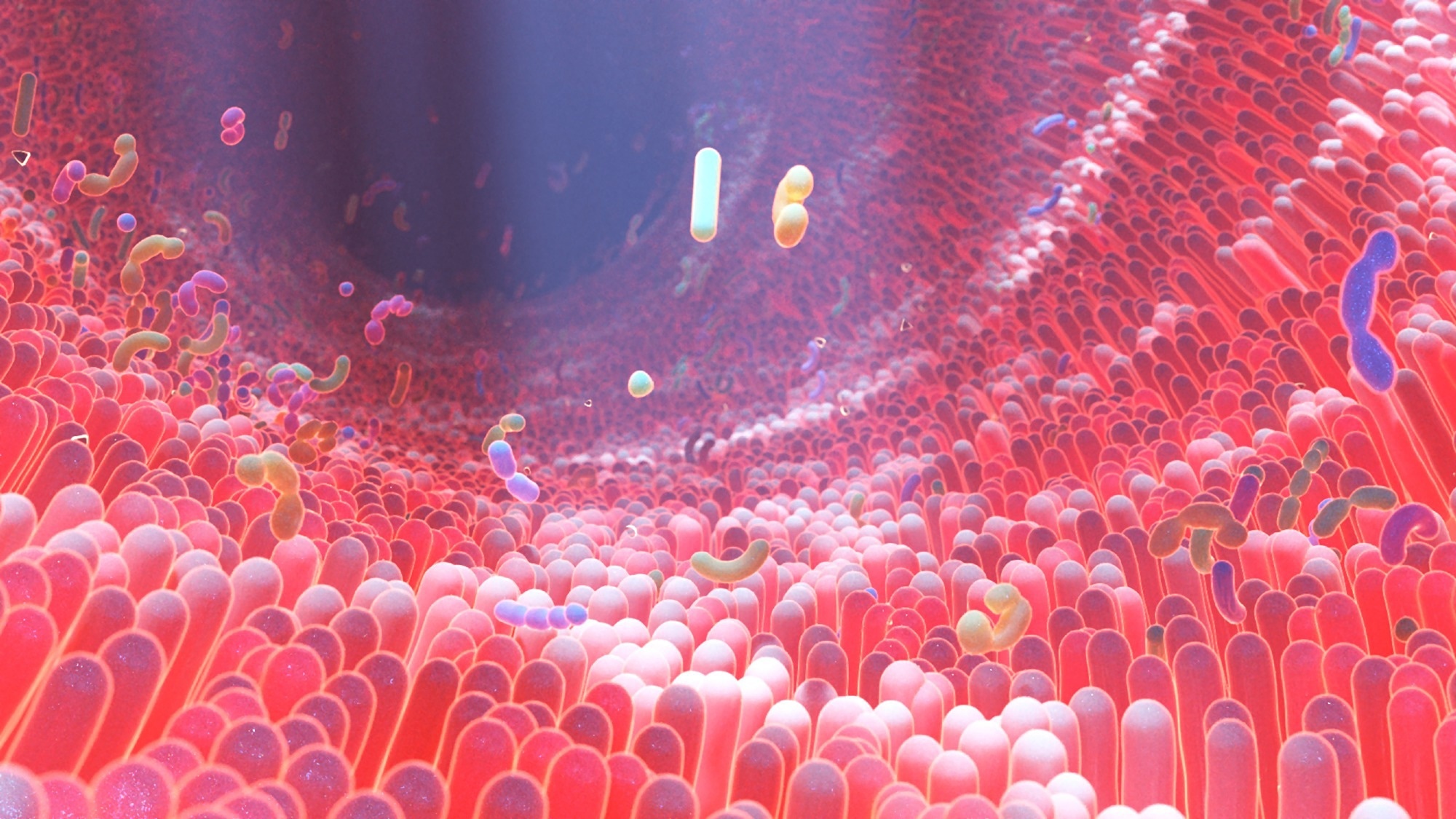In a recent study published in the journal Nature Microbiology, a group of researchers identified and characterized BilR, a novel gut microbiota-derived enzyme, and explored its role in the reduction of bilirubin to urobilinogen, crucial for maintaining bilirubin homeostasis in humans.
 Study: BilR is a gut microbial enzyme that reduces bilirubin to urobilinogen. Image Credit: Alpha Tauri 3D Graphics/Shutterstock.com
Study: BilR is a gut microbial enzyme that reduces bilirubin to urobilinogen. Image Credit: Alpha Tauri 3D Graphics/Shutterstock.com
Background
Bilirubin, a key haem degradation byproduct, is crucial in human physiology, particularly in the gut-liver axis. Secreted into the gut, it either gets excreted or reabsorbed after deconjugation by beta-glucuronidases.
Gut microorganisms further metabolize it into excretable urobilinogen and stercobilinogen, affecting serum bilirubin levels and health. Moderate bilirubin levels act as antioxidants, but high levels can cause jaundice or kernicterus.
Gut microbes uniquely reduce bilirubin to urobilinogen, an essential process in bilirubin homeostasis. Further research is needed to fully understand the mechanisms by which BilR and other gut microbial enzymes influence bilirubin metabolism and their broader implications for human health, especially in disease contexts.
About the study
The methods used in this study involved a combination of experimental screening, comparative genomics, and fluorescence assays to identify the bilirubin reductase enzyme, BilR. The team hypothesized that the enzyme responsible for reducing bilirubin is an oxidoreductase acting on carbon-carbon double bonds.
They searched for genes encoding this enzyme in gut microbial species, focusing on those present in species capable of bilirubin reduction and absent in those that are not. Using fluorescence assays, the researchers tested extracts from various bacteria grown in media supplemented with bilirubin.
These assays were based on the principle that the unstable potential products of urobilinogen, bilirubin reduction, and stercobilinogen could be oxidized to more stable forms and detected via fluorescence, while non-protein-bound bilirubin is not fluorescent.
The researchers identified bilirubin reduction activity in nine strains, including three previously unknown for this capability. All reducers belonged to the class Clostridia of the phylum Firmicutes. A comparative genomics analysis was then conducted on five bilirubin-reducing strains and five closely related non-reducers.
This analysis revealed two orthogroups fitting the presence and absence patterns corresponding to the bilirubin reduction phenotype. One of these was an unannotated enzyme, homologous to 2,4-dienoyl-CoA reductase, an oxidoreductase reducing carbon-carbon double bonds, akin to the expected bilirubin reduction reaction.
Subsequently, the team analyzed operons containing these putative bilirubin reductases, identifying three versions of a putative bilirubin reductase operon. These operons comprised different combinations of three genes, bilQ, bilR, and bilS. The bilR gene was identified as the putative bilirubin reductase, bilS as a flavodoxin-like protein, and bilQ as a transcriptional regulator. Variations in these operons were found among different strains, with some having all three genes and others only one or two.
To experimentally validate BilR's role in bilirubin reduction, the team expressed bilRS and bilR genes in Escherichia coli (E. coli) and used fluorescence assays and liquid chromatography and tandem mass spectrometry (LC-MS/MS) to confirm bilirubin reduction to urobilinogen. These tests showed significant fluorescence and the presence of urobilin in samples transformed with BilRS genes, thus confirming that BilR is capable of reducing bilirubin to urobilinogen.
Study results
Initial experiments in the study focused on identifying microbial species with bilirubin reduction capabilities. Using a fluorescence assay on bacteria cultured in bilirubin-supplemented media, the researchers identified species that potentially reduced bilirubin.
Clostridioides difficile cluster of differentiation 3 (CD3), a known bilirubin reducer, served as a positive control. This assay revealed bilirubin reduction activity in nine strains, including three that were previously unrecognized as bilirubin reducers: Clostridium symbiosum, Clostridium sp. M62/1, and Ruminococcus gnavus CC55_001C.
The comparative genomic analysis was conducted on five bilirubin-reducing strains and five closely related non-reducers. Among 6,256 orthogroups identified, 389 were predicted oxidoreductases, but only two matched the presence or absence pattern associated with bilirubin reduction. One of these was homologous to 2,4-dienoyl-CoA reductase, an enzyme reducing carbon-carbon double bonds, aligning with the expected bilirubin reduction reaction.
Analysis of operons containing putative bilirubin reductases identified three versions of a putative bilirubin reductase operon, comprising genes bilQ, bilR, and bilS. BilR, identified as the putative bilirubin reductase, differed in its genetic makeup across species.
In Ruminococcus gnavus CC55_001C, BilR had two additional C-terminal domains, a flavodoxin-like domain, and a Nicotinamide Adenine Dinucleotide Phosphate Hydrogen (NADPH)-binding domain. This structure suggested a potential role in electron transfer.
To validate BilR as a bilirubin reductase, the genes from Clostridium symbiosum, Clostridioides difficile, and Ruminococcus gnavus were heterologously expressed in E. coli. The fluorescence assay and LC–MS/MS analysis confirmed bilirubin reduction to urobilinogen, indicating BilR's sufficiency in catalyzing this reaction.
Further, by identifying key residues, the study delineated BilR sequences from other Old Yellow Enzyme family members. One particular clade, clade 1, was likely the bilirubin reductase clade. This was confirmed by functional experiments on mutated D166 and R167 residues, crucial for bilirubin reduction. The mutated protein showed significantly lower activity, confirming these residues' importance in the reduction process.
The study also investigated the taxonomic distribution of bilirubin reductases, finding them predominantly in Firmicutes species. The analysis suggested that bilirubin reduction might be strain-specific in some species, with distinct variants of bilR widely distributed across multiple phyla.
Finally, an analysis of human gut metagenomes revealed that bilirubin reductase was often absent in infant guts during the first few months of life, correlating with the risk period for neonatal jaundice. In contrast, it was nearly universally present in healthy adult samples.
The absence of bilirubin reductase was significantly higher in patients with Crohn's disease or ulcerative colitis, linking microbial taxonomic changes in inflammatory diseases to impaired bilirubin reduction in the gut microbiome.